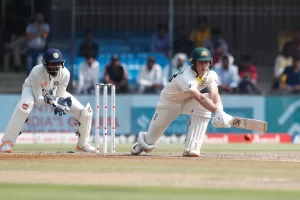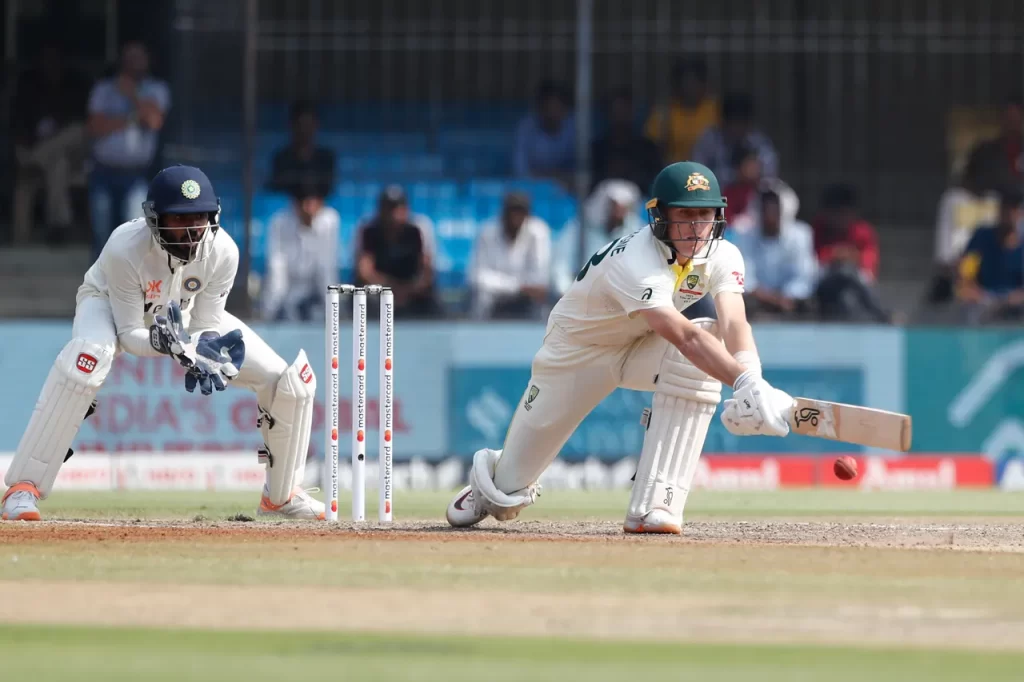
-Atreyo Mukhopadhyay
Other than confusion over what kind of pitch to roll out in Ahmedabad, the Indian will head for the fourth Test also with concerns over a misfiring batting unit. Bailed out by the spinners in the first two Tests and by Rohit Sharma’s century in the first one, the home team found precious little on this front in Indore, which resulted in Australia making an unexpected comeback in the series.
Conditions in the third Test were treacherous for batting. And by and large, pitches were not exactly conducive for batters in Nagpur and Delhi. Statistics show that between the two teams, just one century and seven half-centuries have been made so far. Of these, three half-centuries came from spinners Axar Patel and Ravindra Jadeja. One can say Jadeja is an all-rounder. Yet, isn’t he in the XI primarily for his bowling skills?
This leaves no doubt that batters of both teams have struggled to come to terms with the turning ball and some excellent execution of plans by the spinners. But then, the Indians are expected to and to an extent duty-bound to fare better than the Australian batters. Yes, they do not play on home pitches regularly because India’s domestic season coincides with the international calendar. Having said that, it cannot be overlooked that they grew up on these pitches and have greater understanding of these conditions.
Lack of clarity over how to handle the probing lines of attack maintained by Nathan Lyon, Todd Murphy and Matthew Kuhnemann, a tendency to play loose shots before and after getting set and a general lack of confidence are some of the reasons that have played a part in this. Add to these some brilliant bowling by the Australian spinners and there is plenty to ponder for captain Rohit Sharma, chief coach Rahul Dravid and batting coach Vikram Rathour. And they do not have a lot of time to fix this problem.
India’s biggest worry must be the lack of runs from Virat Kohli. He has 111 runs in five innings and gone 15 Test innings without having scored a half-century after making 79 against South Africa in Cape Town last January. It’s true that he has looked one of the better Indian batters in this series so far and got a few starts. In the first innings in Delhi and Indore he was probably a cut above his teammates, but where are the runs to show for all that? If this continues, questions will be raised and they will not be the most comfortable ones.
Careless shots — before coming to terms with the amount of turn on the pitch, bounce or the lack of it — have been another problem bugging this Indian batting unit. Rohit Sharma, Cheteshwar Pujara and Shreyas Iyer in the first innings in Indore, Shubman Gill, Kohli himself and Iyer again in the second innings succumbed playing high-risk or loose shots when the need of the hour was to grind it out and stick around. Pujara’s knock in the second innings and Usman Khawaja’s in the first were examples that runs could have been made following different principles.
Choice of the batting order was also a bit odd in Indore. Prompted by Jadeja’s confident showing in the first two Tests, the team management promoted him to No 5 ahead of Iyer, who is a specialist batter. With due respect to the left-hander’s batting abilities, it has to be said that he is a bowler first who is more than handy with the bat. For someone like him, No 6 or 7 is a better spot because there he can be himself. At No 5, responsibilities are different, so Jadeja has to become someone he is not. If promoted up the order where he has seldom batted, Jadeja has to reacclimatise, which means he cannot play his natural game.
Sending KS Bharat ahead of Ashwin and Axar is also turning out to be a dubious call. It was alright in the first Test or maybe even in the second. But by then, the think tank should have noticed that the spinners mentioned above are doing better than the wicketkeeper. Bharat is still in the process of finding his feet at this level. Successive failures will make him unsure of himself and also deny Ashwin and Axar a chance to play more freely than they did coming in at No 8 and 9.
Considering everything, it is better to accept that the Indian batters have been well below-par. So have been the Australians, but they are not used to such surfaces. Going back to statistics, it is seen that India’s specialist batters and the wicketkeeper average 19.56 in three Tests. This number is 20.52 for Australia. India are still 2-1 ahead because their three spinners are averaging 30.91 between themselves. If this trio is taken out of the equation, there is hardly any difference between the two teams. That’s something this team has to address if it aspires for the World Test Championship title.




